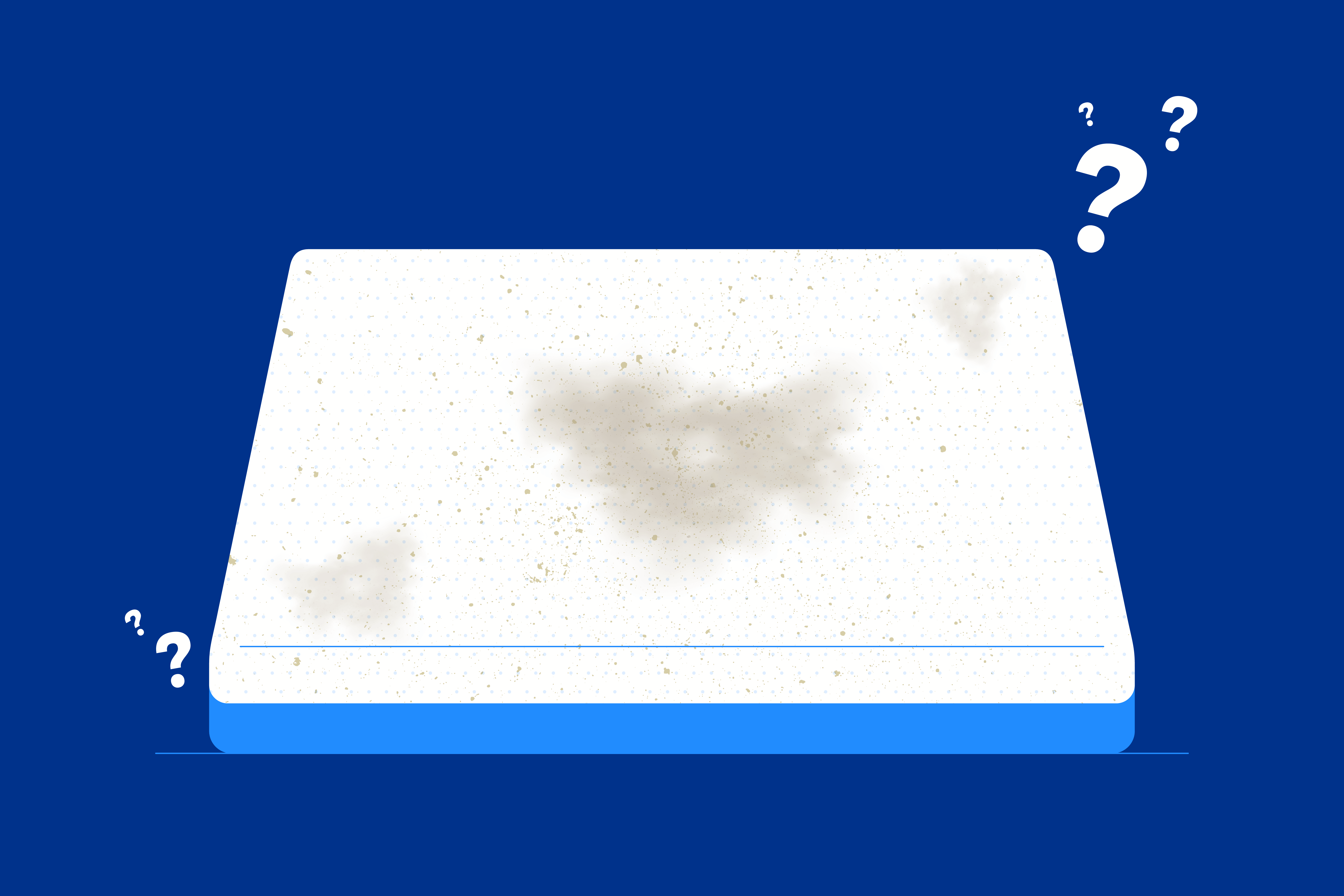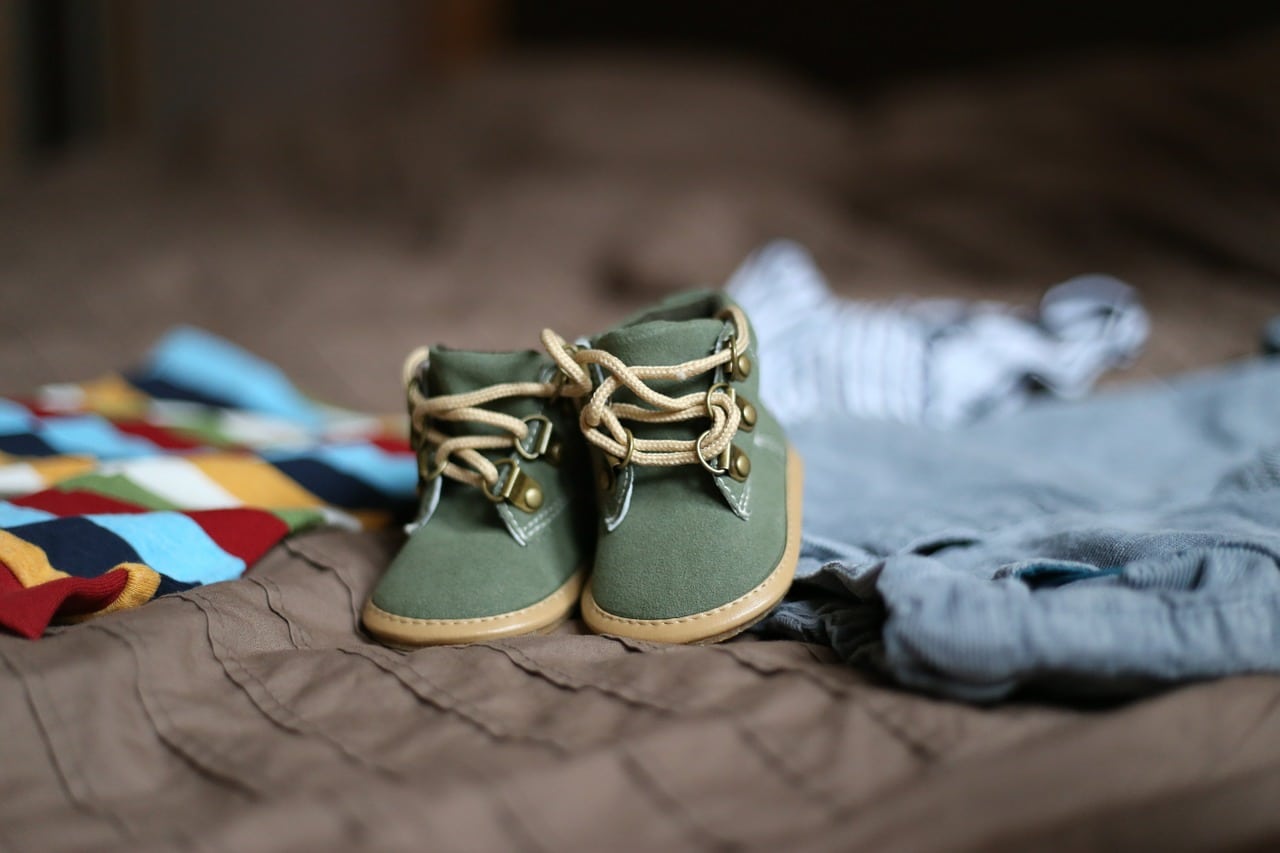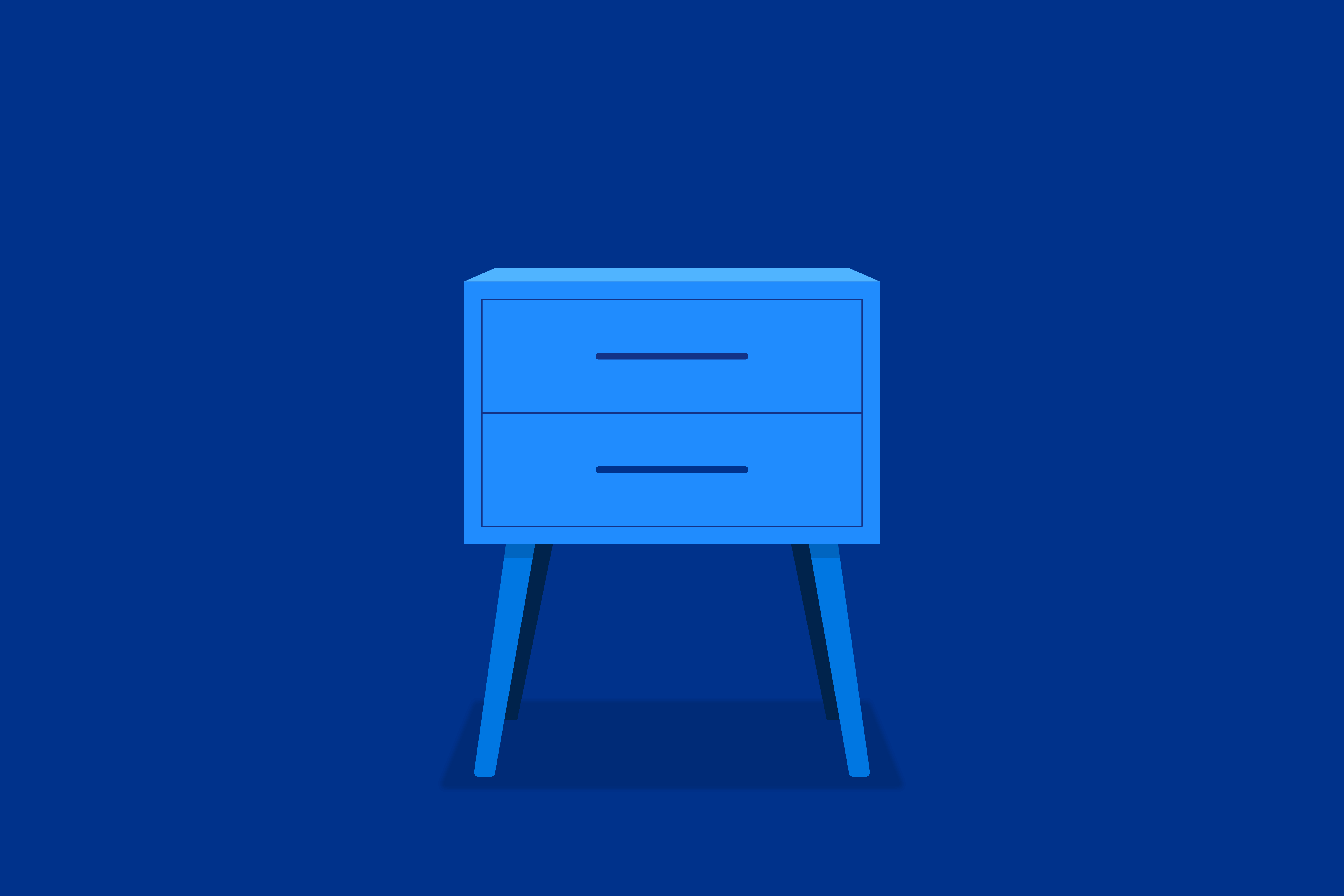Key Takeaways
- Understanding Dust Mites and Allergies: Dust mites are microscopic creatures that thrive in warm, humid environments, particularly in mattresses and bedding. Their allergens can trigger allergic reactions in sensitive individuals, leading to symptoms like sneezing, itching, coughing, and nasal congestion.
- Cleaning Methods to Remove Dust Mites: Effective cleaning methods include vacuuming with a HEPA filter, steam cleaning, and washing bedding in hot water. These techniques help remove dust mites and their allergens from your mattress, creating a healthier sleep environment.
- Additional Steps for Dust Mite Control: In addition to regular cleaning, implementing additional measures such as using mattress and pillow protectors, vacuuming carpets and upholstery, keeping stuffed animals away from the bed, using air purifiers, and reducing humidity levels can further minimize dust mite presence and allergy symptoms.
Do you wake up with itchy eyes and a stuffy nose? It could be because of dust mites lurking in your mattress. These microscopic creatures, along with their allergens, can wreak havoc on your sleep and overall well-being.
But fear not! In this article, we will discuss effective strategies to kill dust mites, eliminate those pesky dust mite allergens, and prevent dust mites from infesting your mattress. Get ready to bid farewell to unwanted bedfellows and enjoy a clean and allergen-free sleep sanctuary.
Understanding Dust Mites and Allergies
Dust mites Verified Source National Library of Medicine (NIH) World’s largest medical library, making biomedical data and information more accessible. View source are microscopic creatures that are commonly found in mattresses and bedding. Although they are too small to be seen with the naked eye, their presence can have a significant impact on our health, particularly for individuals who suffer from dust mite allergies.If you are one of those people, it’s important to understand how dust mites contribute to Verified Source Medline Plus Online resource offered by the National Library of Medicine and part of the National Institutes of Health. View source allergies Verified Source National Library of Medicine (NIH) World’s largest medical library, making biomedical data and information more accessible. View source and why it is crucial to get rid of them in your mattress.
Dust mites thrive in warm and humid environments, which are often found in our homes. They feed on dead skin cells that we shed and can accumulate in our mattresses over time.
As dust mites feed, they produce feces that contain proteins known as allergens. These allergens are the main culprits responsible for triggering allergy symptoms in sensitive individuals.
When people with dust mite allergies come into contact with these allergens, their immune system reacts by releasing histamines, which lead to the characteristic symptoms of an allergic reaction.
These symptoms can include:
- Sneezing
- Itching
- Coughing
- Wheezing
- Nasal congestion
If left untreated, dust mite allergy symptoms can significantly impact daily life and overall well-being.
To effectively manage dust mite allergies, it is essential to minimize exposure to dust mite allergens, including their feces. This involves implementing proper cleaning and prevention strategies to create an environment in which dust mites cannot thrive.
Cleaning Methods to Remove Dust Mites
To effectively remove dust mites from your mattress and create a healthier sleep environment, it’s essential to implement proper cleaning methods. Here are some proven techniques that can help you combat dust mites and eliminate their allergens.
Vacuuming with a High-Efficiency Particulate Air (HEPA) Filter
Regular vacuuming is a vital step in dust mite removal. When vacuuming your mattress, make sure to use a vacuum cleaner equipped with a HEPA filter, which can effectively trap tiny dust mite particles and allergens. This powerful filtration system prevents the mites from being released back into the air.
Remember to pay extra attention to areas such as seams, tufts, and edges where dust mites tend to accumulate. Clean each section thoroughly by moving the vacuum cleaner slowly and overlapping your strokes to ensure a comprehensive clean.
Steam Cleaning
Steam cleaning is another effective method to remove dust mites and sanitize your mattress. The high temperature of the steam can kill dust mites, their eggs, and their allergens on contact. It penetrates deep into the mattress fabric, providing a thorough clean that traditional vacuuming may not achieve.
To steam clean your mattress, you can either use a handheld steam cleaner or hire a professional cleaning service. Follow the manufacturer’s instructions and ensure that your mattress is completely dry before using it again.
Washing Bedding in Hot Water
One of the simplest and most effective ways to remove dust mites from your bedding is by washing them in hot water. Dust mites cannot survive high temperatures, so washing your sheets, pillowcases, and mattress covers in water temperatures above 130°F (54°C) can help eliminate them.
Make sure to check the care instructions for your bedding, as not all fabrics can withstand high temperatures. If necessary, wash your bedding in batches to ensure thorough cleaning.
In addition to these cleaning methods, it’s important to maintain a regular cleaning schedule. Aim to clean your mattress and bedding at least once every three months to prevent dust mites from multiplying and causing allergies.
Additional Steps for Dust Mite Control
To enhance dust mite control in your bedroom, it’s important to take additional steps alongside regular mattress cleaning. By implementing these practices, you can further minimize the presence of dust mites and create a healthier sleep environment.
Use Mattress and Pillow Protectors
One of the most effective additional measures for dust mite control is investing in high-quality mattress and pillow protectors. These specially designed covers act as a barrier, preventing dust mites from infiltrating your bedding and trapping any existing allergens.
When choosing pillow and mattress protectors, look for options that are labeled as “allergen-proof” or “dust mite-proof.” These covers are typically made from tightly woven materials that prevent dust mites from passing through, while still allowing air to circulate for a comfortable sleep experience.
To maximize protection, make sure to cover your mattress, box spring, and pillows completely. Zip the protectors securely to create a seal that dust mites cannot penetrate. Regularly wash the protectors along with your bedding to keep them clean and free from allergens.
Vacuum Carpets and Upholstery
Regular vacuuming of carpets or rugs in the bedroom and upholstery is crucial in preventing dust mites. These surfaces can accumulate allergens, including dust mites and their droppings, over time.
By vacuuming at least once a week with a vacuum cleaner equipped with a HEPA filter, you can effectively remove these allergens and reduce their presence.
(And of course, don’t forget to vacuum the mattress regularly, too!)
Keep Stuffed Animals Away from the Bed
Although they may be beloved companions and there are even benefits of sleeping with stuffed animals, they can harbor dust mites and contribute to allergy symptoms, especially when placed near the bed.
To minimize exposure, consider keeping stuffed animals in a designated play area away from the sleeping area. Regular washing or freezing stuffed animals can also help eliminate dust mites, if you can’t clear them from your sleeping space entirely.
Use Air Purifiers
Air purifiers are excellent tools for improving indoor air quality and reducing allergens. They work by capturing airborne particles, including dust mite allergens, through their filters. By placing an air purifier in your bedroom, you can help reduce the number of dust mites and keep the air clean and healthy.
By adding the benefits of air purifiers to your dust mite control routine, you can enhance the effectiveness of your efforts. They capture other allergens too, such as pollen and mold spores, that can irritate your body and cause allergy reactions.
Reduce Humidity Levels
Dust mites thrive in humid environments, so it’s essential to keep the humidity levels in your bedroom under control. Aim for a humidity level below 50% to discourage dust mite growth.
You can use a dehumidifier to remove excess moisture from the air or ensure proper ventilation in your bedroom by opening windows when the weather permits. Additionally, avoid drying laundry indoors, as it can increase humidity levels.
Managing Dust Mite Allergies
If you suffer from dust mite allergies, understanding how to manage your symptoms is crucial to improving your quality of life. Dust mite allergies can cause a range of uncomfortable symptoms, but there are steps you can take to alleviate them.
Identifying Allergy Symptoms
As we noted earlier, common allergy symptoms caused by dust mites include:
- Nasal congestion
- Sneezing
- Runny or itchy nose
- Watery or itchy eyes
- Itchy throat
These symptoms can vary in severity but are generally triggered by exposure to dust mite allergens.
Allergy Testing Methods
If you suspect you have dust mite allergies, it’s advisable to seek professional medical advice. Your doctor may recommend allergy testing to confirm the specific allergens causing your symptoms. Common methods include:
- Skin prick test: A small amount of allergen extract is applied to the skin through a tiny prick. If you’re allergic to dust mites, you’ll develop a small raised bump at the site.
- Blood test: A blood sample is taken to measure the levels of specific antibodies produced in response to dust mite allergens. See also Does Lack of Sleep Affect My Blood Test Results?
These tests can help identify your triggers and guide your allergist in developing an effective treatment plan.
Allergy Medications
Fortunately, there are various medications available to help manage dust mite allergies. These include:
- Antihistamines: Over-the-counter or prescription antihistamines Verified Source Medline Plus Online resource offered by the National Library of Medicine and part of the National Institutes of Health. View source can relieve symptoms such as sneezing, itching, and a runny nose.
- Nasal corticosteroids: These nasal sprays Verified Source Medline Plus Online resource offered by the National Library of Medicine and part of the National Institutes of Health. View source reduce inflammation in the nasal passages, alleviating congestion, sneezing, and an itchy, runny nose.
- Decongestants: Oral or nasal decongestants can temporarily relieve nasal congestion.
- Other medications: In more severe cases, your doctor may prescribe leukotriene modifiers or allergy shots to provide longer-term relief.
It’s essential to consult with your healthcare provider to determine which medications are suitable for your specific situation.
By understanding the symptoms and seeking appropriate medical guidance, you can effectively manage your dust mite allergies and minimize their impact on your daily life.
FAQs
What time of year are dust mites worse?
Dust mites thrive in warm and humid environments, so their populations tend to peak during the summer and early fall when indoor humidity levels are higher. However, they can persist throughout the year in climates with consistent warmth and humidity.
Taking measures to control indoor humidity and regularly cleaning bedding and upholstered furniture can help mitigate dust mite issues.
Is it OK to sleep with dust mites?
While it’s nearly impossible to eliminate all dust mites, it’s generally considered acceptable to sleep with them to some extent. However, individuals with allergies or respiratory issues may experience discomfort or worsened symptoms in the presence of dust mites.
Using allergen-proof pillow and mattress covers, washing bedding frequently in hot water, and maintaining a clean sleeping environment can help minimize exposure.
What are the symptoms of a dust mite infestation?
Symptoms of a dust mite infestation include allergic reactions such as sneezing, runny or stuffy nose, itchy or watery eyes, and skin rashes. For individuals with asthma, dust mites can trigger or worsen respiratory symptoms. Regular cleaning, using allergen-proof covers, and implementing dust mite control measures can alleviate these symptoms.
Do dust mites eventually go away?
Dust mites do not disappear on their own, as they thrive in common household environments. However, implementing effective control measures, such as using allergen-proof covers, washing bedding regularly, and maintaining lower humidity levels, can significantly reduce their population and alleviate associated symptoms over time.
Where in your house do most dust mites live?
Dust mites are commonly found in areas where they can feed on human skin flakes, such as bedding, upholstered furniture, and carpets. Mattresses, pillows, and soft furnishings are particularly attractive habitats for dust mites.
Regularly cleaning and vacuuming these areas, using allergen-proof covers, and reducing indoor humidity can help control dust mite populations in the home.
Are pillows full of dust mites?
Pillows can indeed harbor dust mites, especially if not regularly cleaned and protected. The accumulation of skin flakes and warmth from our bodies create an ideal environment for dust mites.
Using pillow protectors, washing pillowcases and covers frequently, and choosing hypoallergenic pillows can help minimize the presence of dust mites in pillows, promoting a healthier sleep environment.
Conclusion
Keeping your mattress free from dust mites is crucial for maintaining a healthy and allergy-free sleep environment. Throughout this article, we have explored various strategies to get rid of dust mites and ensure a dust-free space for rest. By following these tips, you can experience allergy relief and improve your overall sleep quality.
In case you experience dust mite allergies, it’s important to manage your symptoms. Consult with a healthcare professional to identify the right allergy medications and treatments for you.
With proper allergy management and regular mattress cleaning, you can achieve allergy relief and sleep soundly without dust mites disturbing your peace.
About the author
April Mayer is a sleep expert and writer with a degree in exercise physiology. She has dedicated her career to exploring the relationship between sleep and productivity. Her insightful articles, such as "The Surprising Way Your Mood Might Be Messing With Your Productivity" and "Wake Up to More Productive Mornings," have been featured in reputable publications like Forbes, Greatist, Real Homes, Thrillist, Tom's Guide, and Eat This, Not That. With a passion for helping others lead more productive lives through restful sleep, April offers valuable expertise on foods and vitamins for better sleep. As a trusted member of the Early Bird team since March 2020, she continues to provide informative and well-researched content.
View all posts





